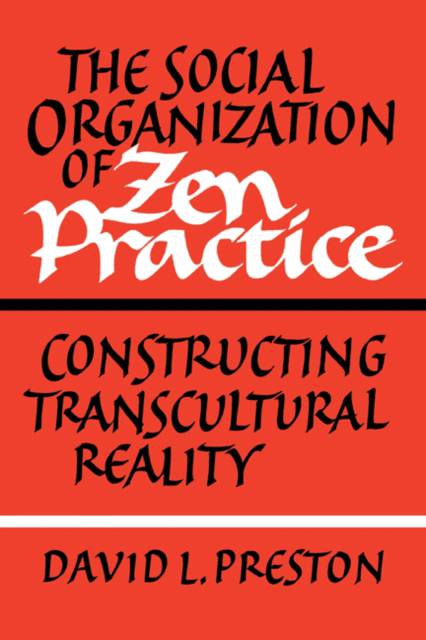
- Afhalen na 1 uur in een winkel met voorraad
- Gratis thuislevering in België vanaf € 30
- Ruim aanbod met 7 miljoen producten
- Afhalen na 1 uur in een winkel met voorraad
- Gratis thuislevering in België vanaf € 30
- Ruim aanbod met 7 miljoen producten
Zoeken
The Social Organization of Zen Practice
Constructing Transcultural Reality
David L Preston
Paperback | Engels
€ 60,95
+ 121 punten
Uitvoering
Omschrijving
Preston provides both a first-hand account and a theoretical analysis of the way an American Zen community works. The form Zen practice takes in the United States is described in detail through close study of two Zen groups in southern California. Preston leads readers through the buildings and grounds of a Zen residential community and introduces them to the main forms of Zen practice, paying special attention to the styles and implications of meditation. The book's second half develops a theory of the nature of religious reality as it is shared by Zen practitioners. Prestonattempts to explain how this reality--based on a group's ethnography yet at the same time transcending it--relates to meditation and other elements of Zen practice by drawing on the notions of ritual, practice, emotions, and the unconscious found in the writings of Pierre Bourdieu, Randall Collins, Erving Goffman, and Emile Durkheim.
Specificaties
Betrokkenen
- Auteur(s):
- Uitgeverij:
Inhoud
- Aantal bladzijden:
- 190
- Taal:
- Engels
Eigenschappen
- Productcode (EAN):
- 9780521183987
- Verschijningsdatum:
- 26/01/2012
- Uitvoering:
- Paperback
- Formaat:
- Trade paperback (VS)
- Afmetingen:
- 152 mm x 229 mm
- Gewicht:
- 285 g

Alleen bij Standaard Boekhandel
+ 121 punten op je klantenkaart van Standaard Boekhandel
Beoordelingen
We publiceren alleen reviews die voldoen aan de voorwaarden voor reviews. Bekijk onze voorwaarden voor reviews.











